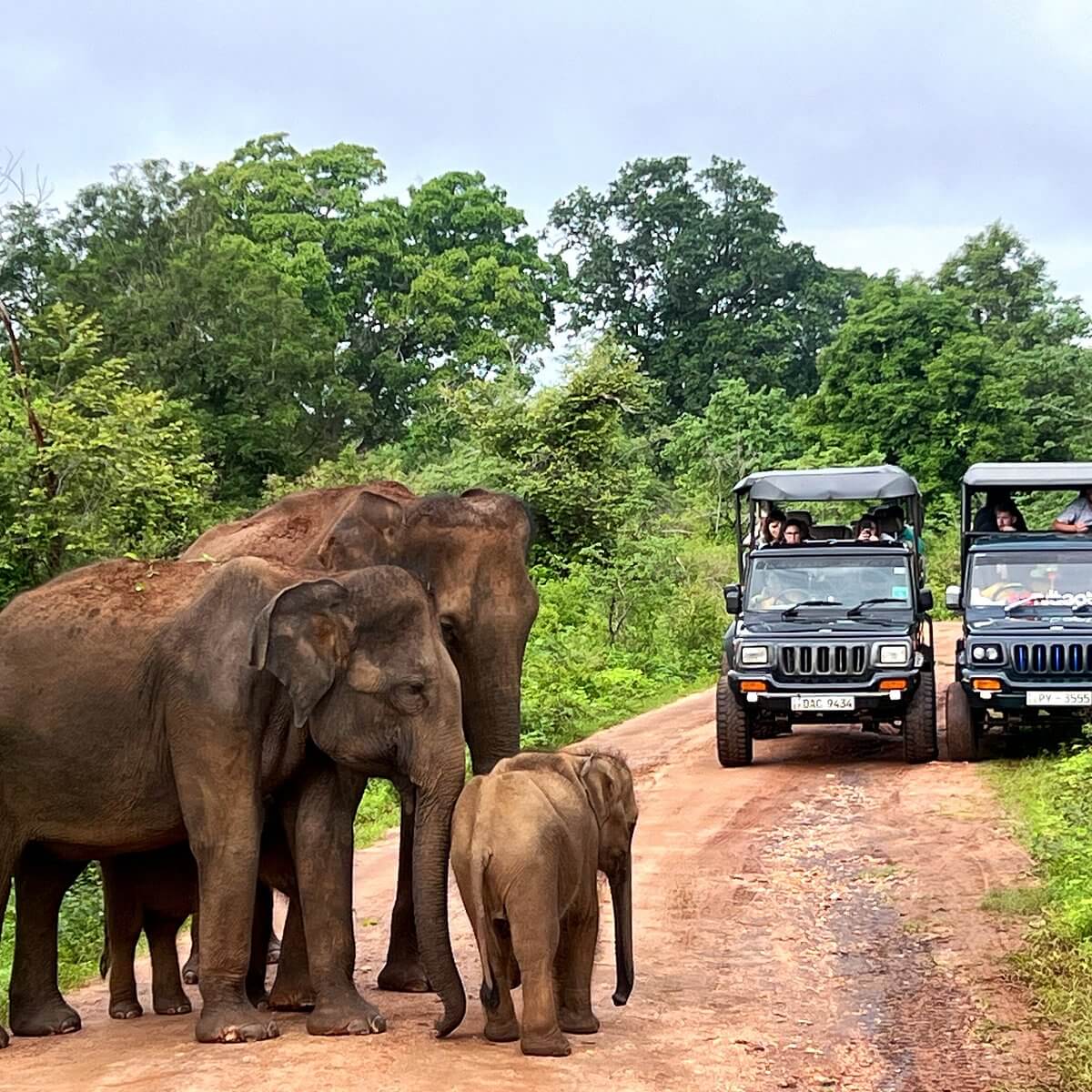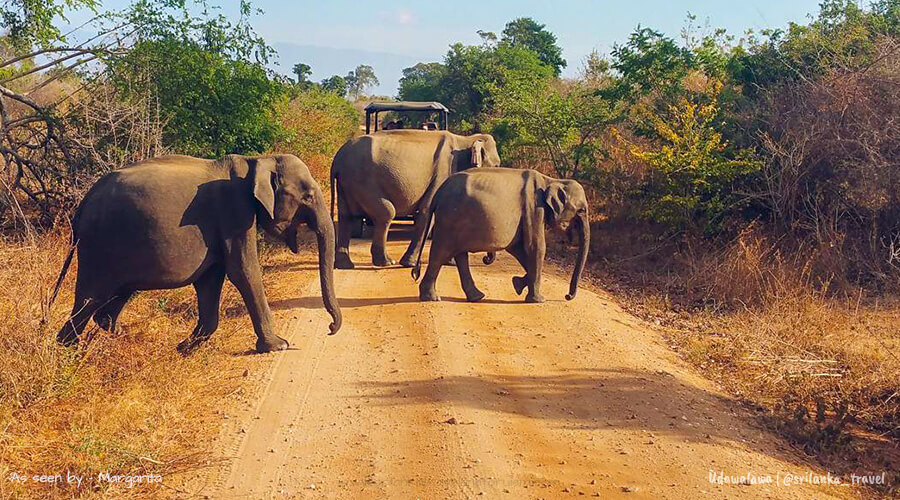
Sri Lankan elephants (Elephas maximus maximus) are a distinct subspecies of Asian elephants and the largest subspecies of Asian elephants. Adult males (bulls) can reach heights of up to 3.5 meters (11.5 feet) at the shoulder, while females (cows) are slightly smaller. They have relatively smaller ears compared to African elephants and their mainland Asian counterparts.They are native to Sri Lanka and are found throughout the island, inhabiting a range of habitats including forests, grasslands, and agricultural areas.they typically live in matriarchal herds led by the oldest and most experienced female (the matriarch). These herds consist of related females and their offspring, although adult males may live solitary lives or form loose bachelor groups. Female elephants (cows) reach sexual maturity around 10-12 years of age, while males (bulls) become sexually mature around 15-20 years old. Mating behavior often involves competition among males for access to estrous females. Bulls will display dominance through vocalizations, posturing, and physical contests.
Gestation period lasts approximately 22 months, the longest of any land mammal.Female elephants give birth to a single calf, occasionally twins, after a long gestation period. Newborn calves typically weigh around 100 kilograms (220 pounds) and are cared for by their mothers and other females in the herd. Calves are dependent on their mother's milk for the first few years of life but start to eat solid food, mainly vegetation, at around six months old.In the wild, Sri Lankan elephants can live up to 60-70 years. Their lifespan is influenced by factors such as habitat quality, human-wildlife conflict, and poaching. They are classified as endangered by the IUCN Red List due to habitat loss, fragmentation, and human-elephant conflict. Conservation efforts focus on protecting their habitats and mitigating human-elephant conflicts.
